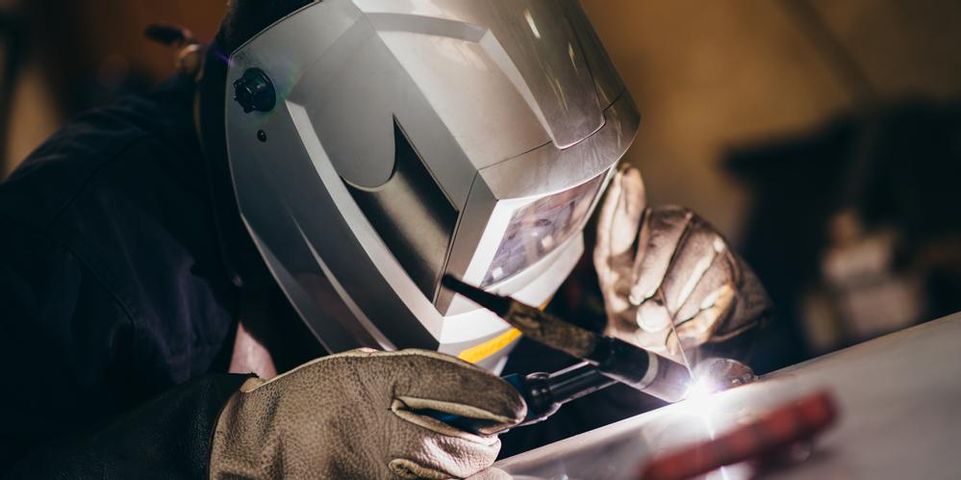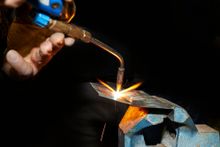What Is the Difference Between Gas Welding & Arc Welding?

Traditionally, welding has been done with an oxyacetylene torch, which combines oxygen and gas to generate heat capable of both cutting and welding metal. However, this method has some drawbacks, which is why it's generally been replaced by arc welding processes. That being said, there are still some situations in which an oxyacetylene torch is just as good—or even superior to—stick, TIG, or MIG welding. Below are a few of the main differences between the two most popular welding methods.
Oxyacetylene Torch Welding
 One of the biggest drawbacks of gas welding is that it tends to warp the metal as it's being welded, creating a less aesthetically-pleasing joint. However, if you're repairing a fence or fixing a piece of industrial equipment, the appearance of the weld may not matter. The heat of gas torches also tends to stay focused on the weld itself, so welders can repair cars and trucks with oily surfaces without drawing a lot of contaminants into the weld. While the equipment for gas welding is often less expensive and more portable than arc welders, it also carries some risks. Oxyacetylene gas is highly combustible, and could explode if the equipment malfunctions.
One of the biggest drawbacks of gas welding is that it tends to warp the metal as it's being welded, creating a less aesthetically-pleasing joint. However, if you're repairing a fence or fixing a piece of industrial equipment, the appearance of the weld may not matter. The heat of gas torches also tends to stay focused on the weld itself, so welders can repair cars and trucks with oily surfaces without drawing a lot of contaminants into the weld. While the equipment for gas welding is often less expensive and more portable than arc welders, it also carries some risks. Oxyacetylene gas is highly combustible, and could explode if the equipment malfunctions.
Arc Welding
Arc welding relies on an electric current to melt metal edges and create a weld. These processes, which consist of several types, usually produce a much cleaner weld; this makes them ideal for auto body work and other situations in which the cosmetics matter. The high voltage used by most arc welders also puts them at risk for explosion, but these accidents are extremely rare. The higher cost of the equipment is offset by the fact that arc welding is usually much faster than using an oxyacetylene torch.
For over 40 years, Tacoma's business owners have relied on Brady’s Welding Specialties for a wide range of metal repair services. To learn more about their reputation for excellence and to request a quote, visit their website or call (253) 475-4608. To learn more about the welding process, follow the shop on Facebook.
About the Business
Have a question? Ask the experts!
Send your question

